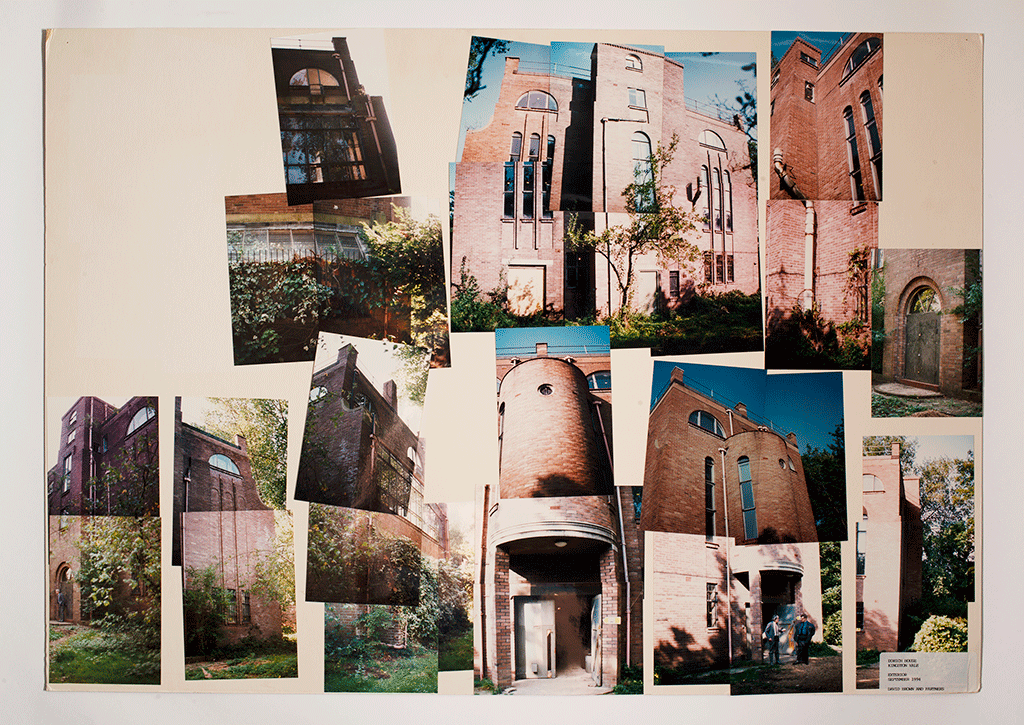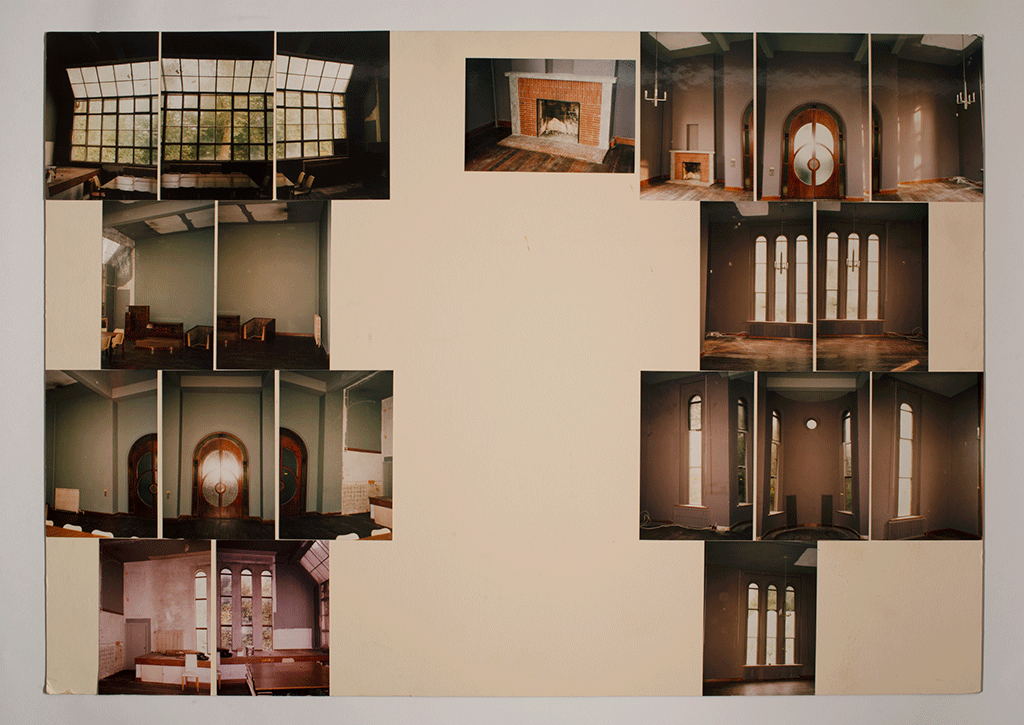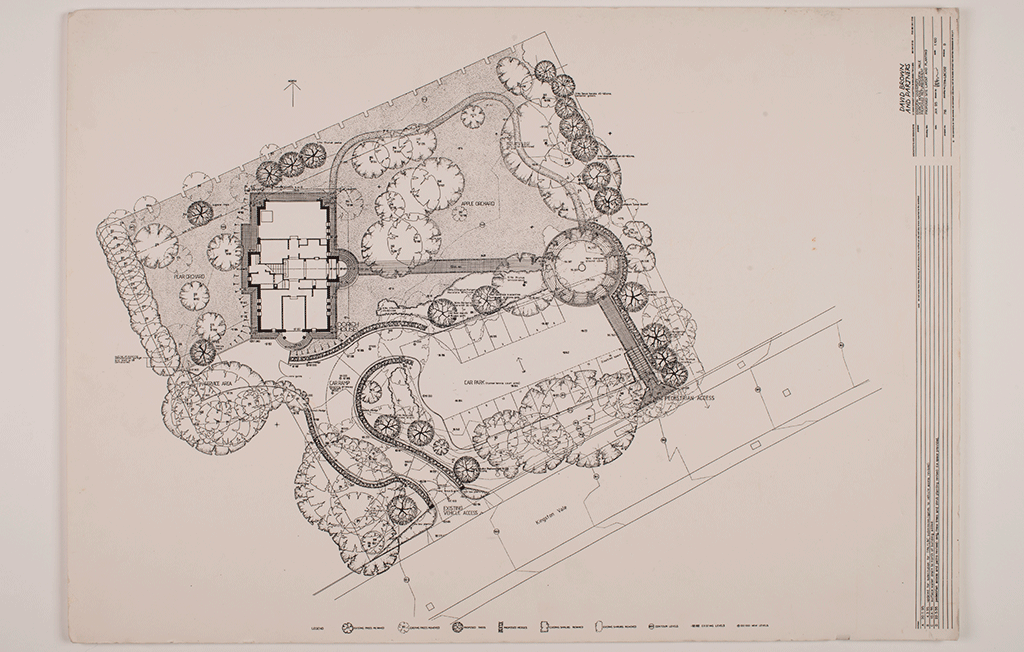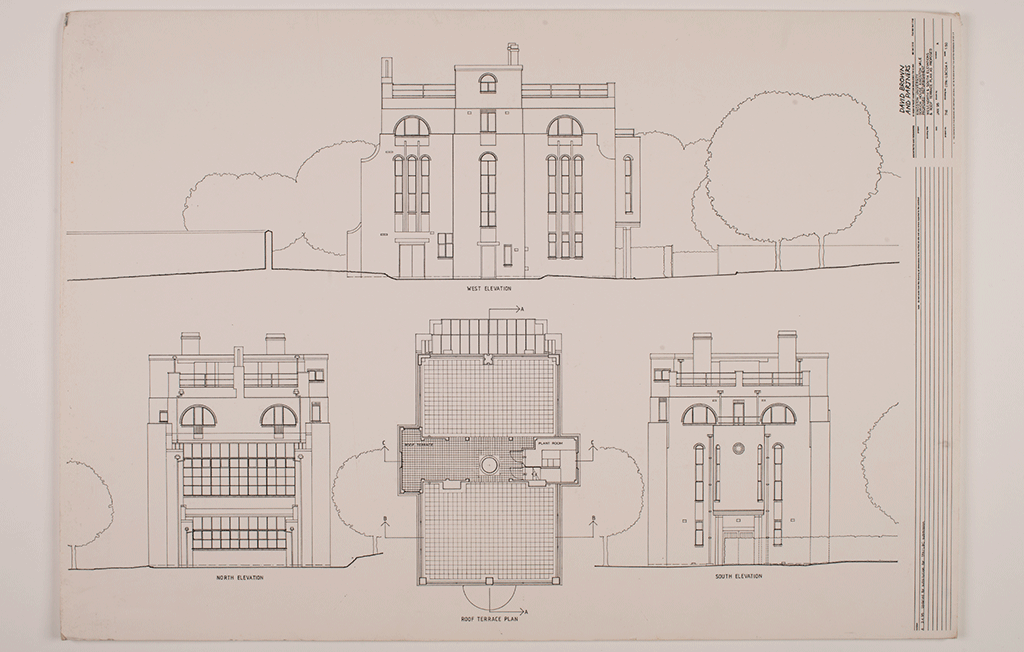The Architects and the Project Brief

The job of restoring Dorich House was entrusted to the architectural practice David Brown and Partners in mid-1994. David Brown was a member of the Institute of Architectural Conservation and had a strong interest in historic restoration. Pam McCleneghen, former Head of Property Services at Kingston University, recalls that the firm’s experience in renovating listed buildings was key to their selection for the project.
Sally Brown, one of the partners in the practice, remembers the early project briefing sessions, when Kingston University was still formulating plans for the use of Dorich House. No fixed brief for the building had been decided upon when David Brown and Partners were first appointed, the main aim being “to renovate it, refurbish it, bring it up to date and turn it into a usable entity”. Brenda Martin, former Dorich House Museum curator, recalls that the former Vice Chancellor, Dr Robert Smith, had a vision for Dorich House to be “a sort of jewel in the crown” for the University and that one of the very first suggestions was that “the top flat would be for visiting professors or academic use for researchers to stay in. So that was going to be a separate use… the middle floor for displaying the collections, and offices on the ground floor… with an idea to have a sculptor or sculpture student using it [the plaster studio] as an artist’s studio”.
Trevor Thorne, Marketing Director at Kingston University from 1990-2000, remembers early discussions about how the restoration was to be financed. To raise funds for the ambitious project, the estimated cost of which was around £500,000, a portion of Gordine and Hare’s extensive collection of Russian art and design was sold through the auctioneers Phillips and raised around £200,000. To secure additional support “The Dorich House Appeal” was launched with a brochure to promote the renovation plans and fundraising campaign.
At David Brown and Partners’ initial interview, David Brown had indicated that the University’s proposed budget for the project was probably too low, and that providing an accurate assessment of the cost of the renovation would depend on early investigations into the building’s condition. When the extent of essential remedial works to the structure was revealed, initial forecasts were revised by the Quantity Surveyor Parsons Scanlon. As Sally Brown explained, even after initial exploratory works had been completed “things kept popping up… you couldn’t entirely set the whole situation before you started work on the site. It’s just not possible with a building like that. Things appear. Then other things come along”. Some of these changes came in response to the evolving brief for the building and the introduction of new requirements, such as the addition of blackout blinds to Gordine’s two former studios to allow their use for academic and public events.
But before such finer details could be considered, enormous amounts of initial research into the original design of Dorich House took place. As Sally Brown remembers, “…obviously there was the building fabric to be surveyed and very carefully looked at its condition. So not only physical plans but looking at the condition of the building”. Structural engineers Alan Baxter and Associates were employed to work alongside David Brown and Partners and carried out initial investigative works, opening up key parts of the building to determine the original construction methods and the remedial works required to reinstate those parts of the building that were failing.
Key elements of the restoration were agreed upon early in the process. As Sally Brown has indicated, Dorich House “was to be renovated, completely in sympathy with the original building and there were to be no vastly controversial additions or subtractions… we were going to try and put it back as near as possible to how it was in 1936 when it was completed… but… there were practical issues to address, for example, with fire regulations to make it a usable public building… and that determined certain things that had to be done within the building”.
Research into the original building materials was vital. Brown remembers an early research visit to what is now the Historic England Archive: “We found some documentation and things in the National Records Office in Swindon… we then gradually put together a scheme”.
A Situation Report prepared by the architects, dated 17 October 1994, confirmed the approach agreed “the minimum intervention approach means that wherever possible the original materials, finishes and structures will be respected and/or retained. Alan Baxter and Associates will report in detail on the structural faults that are apparent, hopefully indicate why these have arisen and propose suitable remedial actions”.

Essential to the renovation of the house was a complete and accurate assessment of the entire plot to decide on practicalities such as the best means of approach to the building, pedestrian access, and car parking. This involved making a record of all the trees on the site and research into the former use of the garden which was carried out by the architects. Brown recalls “The landscaping was a separate but big part of the project… to make the landscaping work for the building and also provide a car park and a proper entrance that could be negotiated”.

She remembers the strength of the project team and “great feeling between everybody” and their collective desire to “retain the ethos [of the building] and as much as possible… whilst at the same time making it watertight for a start – a major part – restoring it and making it fire safe, which was one of the major things as obviously it was going to become a public building… it needed to be current, up to date for current fire regulations”.

While the proposals for how Dorich House was to be used by the University continued to develop throughout the renovation, being as empathetic as possible with the original design remained core to the brief and project progression. The building was restored as closely as possible to its original design, while making subtle interventions and reconfigurations to ensure the building met the current building regulations when converting the spaces from a single dwelling to public use under Planning and Building Regulations. Many challenges were faced due to the desolate state of the building and the fluid nature of the brief. However, the University selected a highly experienced team to manage the project, ensuring Dorich House was brought up to date sympathetically in accordance with its listed building status.
The decisions that were made in the mid-1990s proved highly successful in allowing the subsequent development of Dorich House as a formally accredited museum.
Published as part of the project The Squatter Years: Recovering Dorich House Museum’s Recent Past, funded by the National Lottery Heritage Fund, February 2021.

